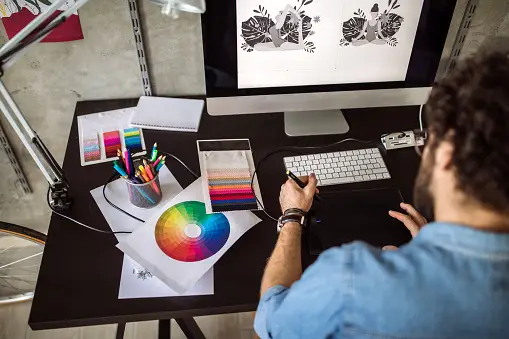
In the dynamic world of design, where creativity meets functionality, custom shapes stand out as a key tool for conveying ideas, establishing brand identity, and creating distinctive products. This post delves into the role of custom shapes in design and production, providing insights, tips, and a look into future trends. Ideal for graphic designers, product designers, or small business owners, mastering custom shapes can elevate your work and set your products apart in a competitive market.
Understanding the Role in Creativity and Manufacturing
Custom shapes go beyond the standard circles, squares, and triangles often found in design templates. They are tailored, unique forms that can carry deep meanings, evoke emotions, and guide functionality. In the realm of design and production, custom shapes can be a game-changer, offering new ways to approach problems, connect with audiences, and express creativity.
The Impact of Custom Shapes in Graphic Design: Examples and Case Studies
In graphic design, custom shapes can cut through the noise, capturing the viewer’s attention and communicating complex messages swiftly and effectively. From logos that become synonymous with a brand’s identity to bespoke illustrations that tell a story, custom shapes can drive engagement and foster brand recognition. Consider the dynamic ribbon shape of the Coca-Cola logo or the bitten apple of Apple Inc.; these custom shapes transcend their literal meanings to evoke feelings and associations in the consumer’s mind.
Utilizing Custom Shapes in Product Design: Enhancing Functionality and Aesthetics
Product design improves significantly with the integration of custom shapes and die-cut techniques, enhancing both appearance and usability. Examples include ergonomic kitchen tool handles, uniquely shaped bottles iconic to brands, and the sleek aerodynamics of modern automobiles. These instances showcase the perfect blend of form and function, resulting in memorable and user-friendly products.
Practical Tips for Creating and Implementing Custom Shapes in Your Designs
- Start with Research: Understand the message you wish to convey or the problem you aim to solve.
- Sketch Freely: Allow your creativity to flow without boundaries in the initial phases.
- Consider the Context: Think about where and how your design will be used, ensuring that custom shapes enhance rather than hinder the design’s purpose.
- Use the Right Tools: Whether it’s vector graphic software for digital designs or 3D modeling tools for product design, the right technology can make your vision a reality.
- Test and Iterate: Create prototypes, gather feedback, and be prepared to refine your designs.
The Business Side
Custom shapes can be a potent asset in the business strategy, significantly contributing to branding, marketing efforts, and product differentiation. In a marketplace where consumers are bombarded with choices, custom shapes can pierce through the ordinary, offering something memorable that stands out. They can encapsulate a brand’s essence, becoming symbols that consumers identify and align with, ultimately driving loyalty and preference.
Future Trends in Custom Shapes
The future of custom shapes in design and production is boundless, driven by technological advancements and a deepening understanding of consumer psychology. We are likely to see more interactive shapes that change in response to user interaction or environmental conditions, sustainable design shapes focusing on minimal waste, and advances in materials that allow for even more innovative form factors.
Conclusion
Now that you grasp the concept of custom shapes in design and production, it’s crucial to incorporate them into your projects. Whether you’re a designer or a business owner, custom shapes provide limitless opportunities to enhance your brand and products. With thoughtful planning, creativity, and appropriate tools, custom shapes can become a significant advantage, differentiating your designs and fostering success in the current competitive market.


